Amsterdam: VOC courtyard headquarters
by
¨Pieter Fouquet Jr
Detail
Date of first view: 1783
Date of this view: 1805 (second edition)
Dimensions copper plate (not including margins): 26 x 35,5 cm
Dimensions (including margins): 32,5 x 44 cm
Condition: Very good copper engraving on strong paper and wide margins. Centre fold as published. A bit age-toning at bottom centre fold..
Condition rating: A+
Verso: blank
From: Nieuwe atlas, van de voornaamste gebouwen en gezigten der stad Amsterdam, met derzelver beknopte beschryvingen; first edition 1793; this edition 1805.
Price (without VAT, possibly to be added): €350,00 (FYI +/- $388,50 / £311,50)
Unless otherwise specifically stated on this map page, we charge the following expedition costs in euro (unfortunatelly, gone up with Covid, but still too low in reality!):
– Benelux: 40 euro
– Rest of Europe: 60 euro
– Rest of the World: 100 euro
In stock
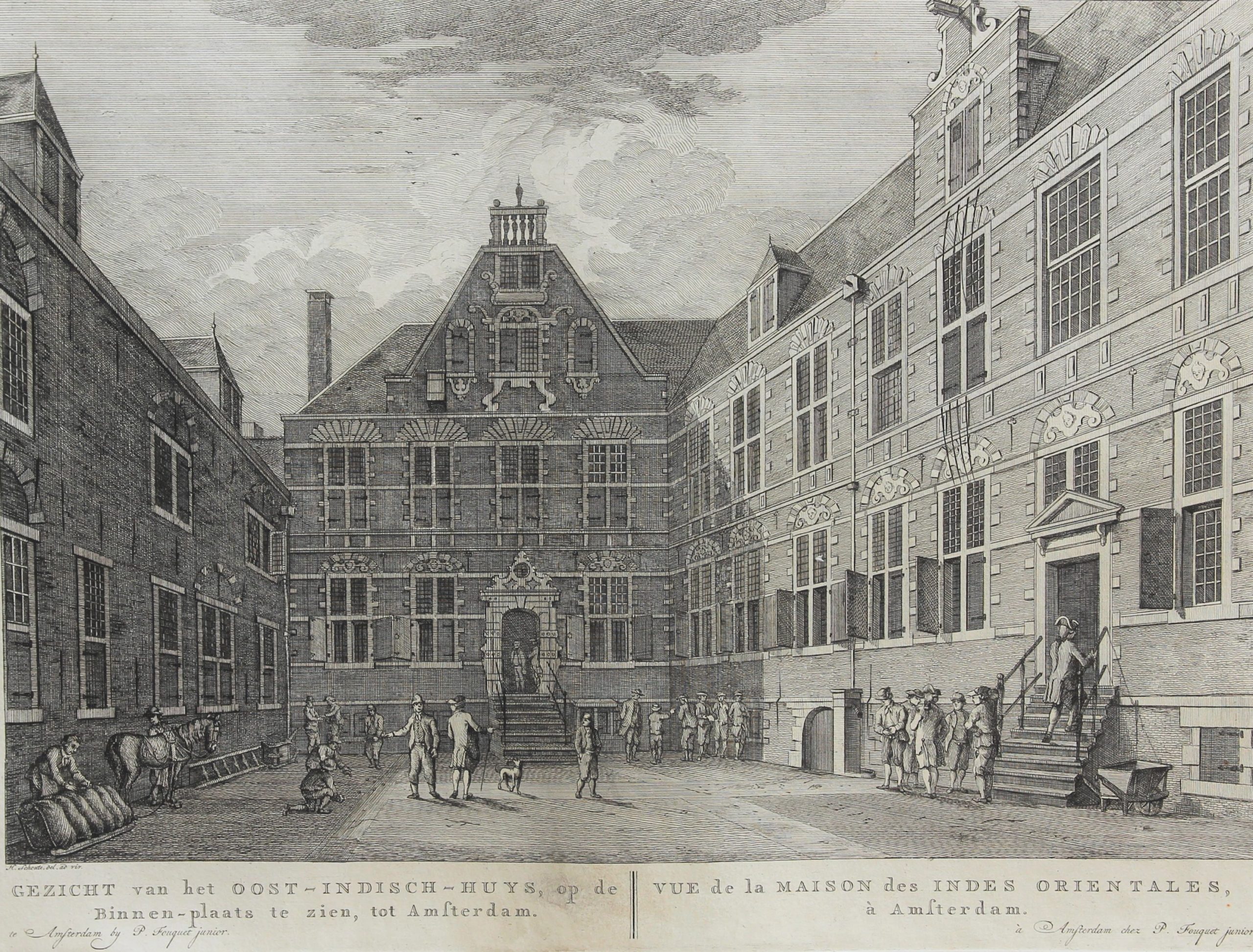
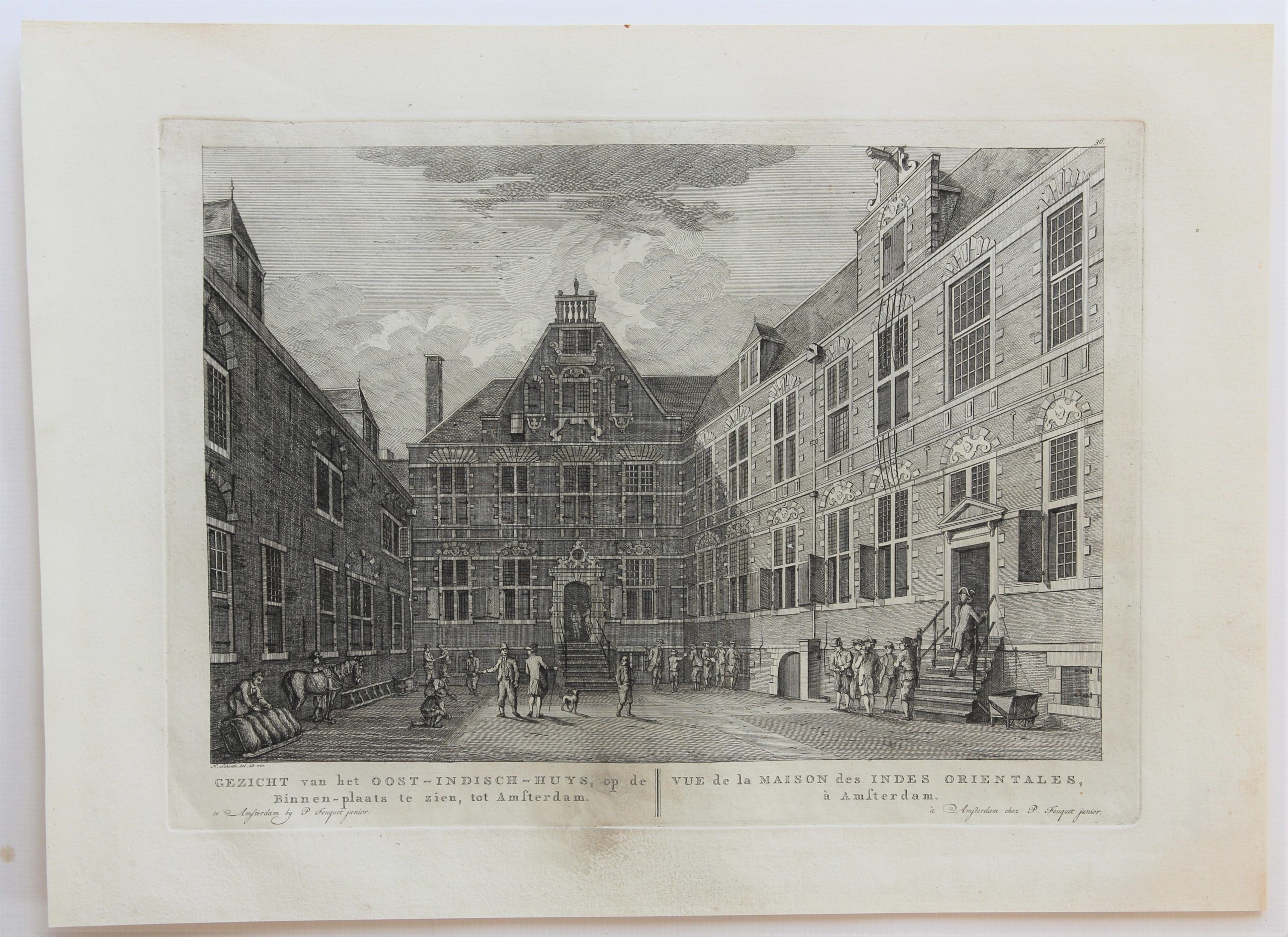
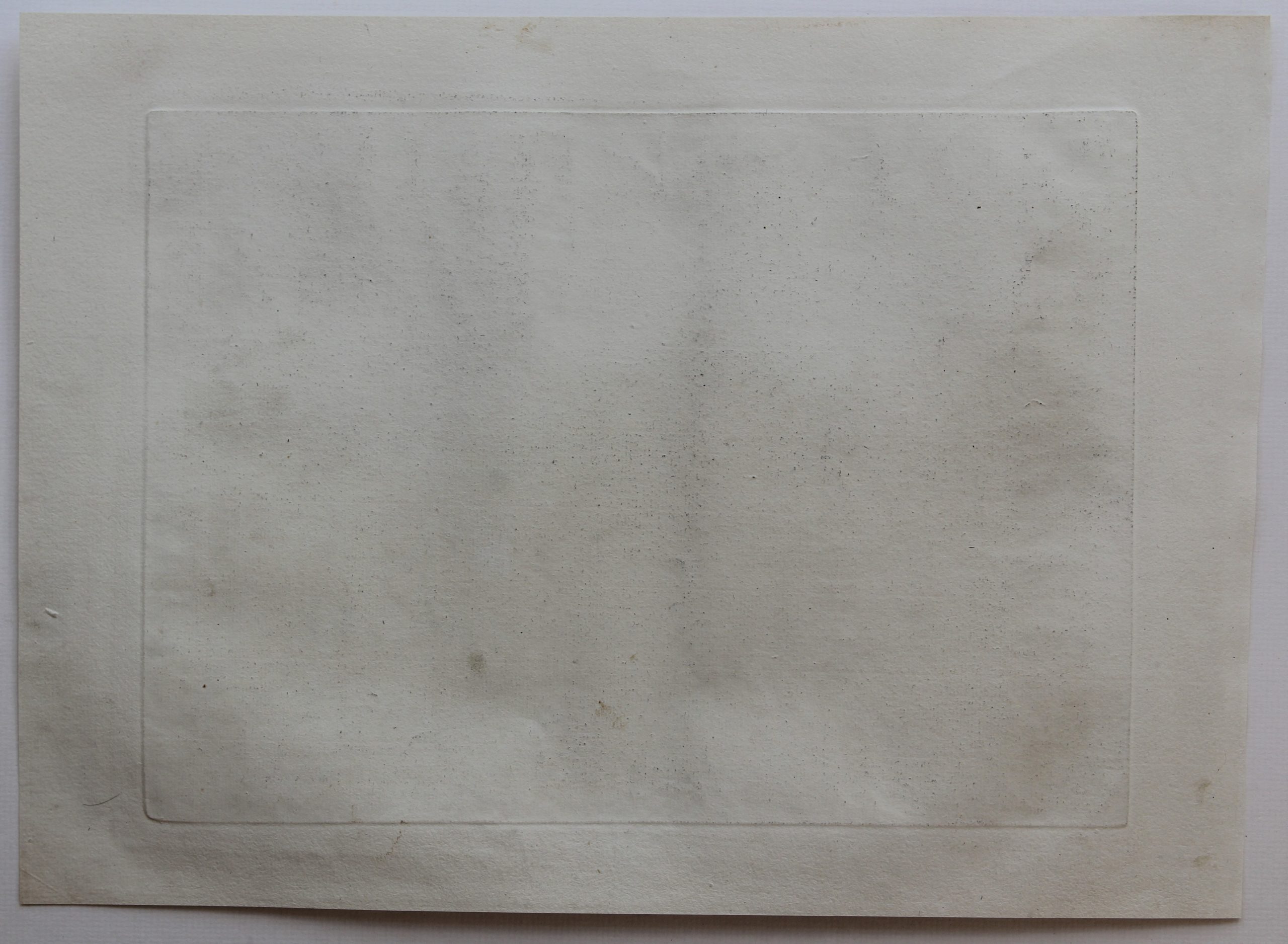
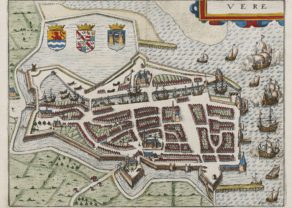
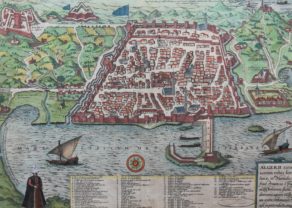
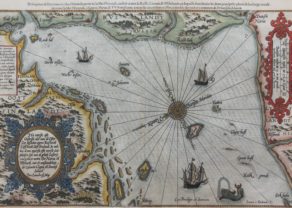

VOC Headquarters
From 1603 the Amsterdam chamber of the VOC took up residence on the Oude Hoogstraat on the corner with the Kloveniersburgwal. The buildings have been expanded over the decades. Since it was located next to a canal, goods from Asia, mainly various beginnings, could be stored in the attic. The building gold first as the administrative and administrative office for the Amsterdam Chamber, but also the execution of Heren XVII were held. Ship crews were hired here and the archives and maps of the VOC were also kept there.
The Republic became a French client state in 1795 under the name Batavian Republic. After the dissolution in 1798 of this building until 1808 as the seat of the colonial administration for the benefit of the French. In 1806 Napoleon installed his brother Lodewijk Napoleon Bonaparte as local king. The building is now part of the University of Amsterdam.
Title: Gezicht van het Oost-Indisch-Huys op de binnen-plaats te zien, te Amsterdam; Vue de la maison des Indes Orientales à Amsterdam. Engraver: E. Maaskamp